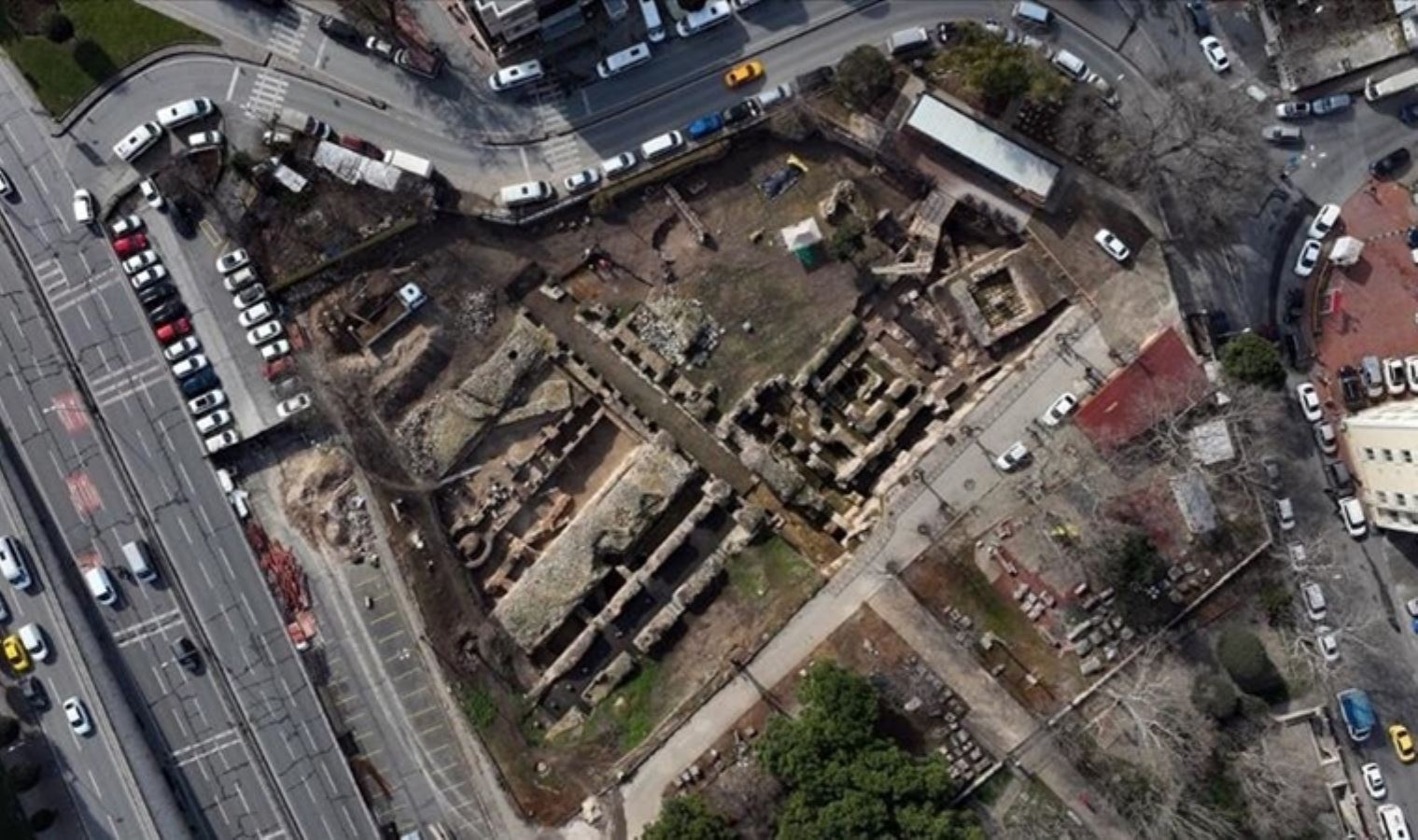Remains of 1,500-year-old church unearthed in Istanbul
Church of St. Polyeuktos was built by Eastern Roman Princess Anicia Juliana, who wanted to show power against Emperor Justinianus and his wife Theodora, says archaeologist.

The ruins of the Church of St. Polyeuktos, considered one of the most important structures of Eastern Rome and built around 1500 years ago, are being unearthed in archaeological excavations in Istanbul, Turkey’s largest city.
The Directorate of Istanbul Archeology Museums teams are currently excavating in the church's underground areas, and the latest discoveries have been added to the inventory.
Rahmi Asal, director of the museums, told Anadolu that the area where the church is located contains some of Istanbul's most important archaeological remains, which have very important decorations and architectural structures.
St. Polyeuktos is the largest and most important structure of its period after the Grand Hagia Sophia Mosque in the metropolis, he said, adding that the church was built in 524-527 by the Eastern Roman Princess Anicia Juliana, who wanted to show power against Emperor Justinianus and his wife Theodora, who later succeeded to the throne after him.
Asal explained that the church was heavily damaged, particularly during the Latin invasion, and that the building was also said to have been damaged by an earthquake in 1010, with parts taken from there and used in the St. Mark's Basilica in Venice.
He said the church's materials were also used in the decoration and construction of other church-like structures in Istanbul, and that these walls that have survived to the present day still exist.
The first archaeological excavations of the church were carried out in 1960-1967 by British art historian Prof. Dr. Martin Harrison and archaeologist Nezih Firatli, he said, adding that the majority of the church's uncovered area was unearthed at that time.
He said a piece of male statue torso curved in marble was discovered about one meter deep from the surface on the northern sides of the main structure as a result of the excavations, and that the marble statue measuring 33 centimeters high and 28 centimeters wide may date from the Late Roman period of the third to fourth centuries.

En Çok Okunan Haberler
-
 Korhan Berzeg olayında yeni gelişme
Korhan Berzeg olayında yeni gelişme
-
 İstanbul'da zincirleme kaza
İstanbul'da zincirleme kaza
-
 Polis meslektaşlarına ateş etti
Polis meslektaşlarına ateş etti
-
 Mert Hakan Yandaş'dan sosyal medyada çok sert tepki!
Mert Hakan Yandaş'dan sosyal medyada çok sert tepki!
-
 Kadınlara 'Cehennemde yanacaksınız' diye bağırdı
Kadınlara 'Cehennemde yanacaksınız' diye bağırdı
-
 Müsavat Dervişoğlu İYİ Parti Genel Başkanı oldu
Müsavat Dervişoğlu İYİ Parti Genel Başkanı oldu
-
 'Türkiye ilk etkilenenlerden olacak...’
'Türkiye ilk etkilenenlerden olacak...’
-
 Rakı fiyatlarına büyük zam
Rakı fiyatlarına büyük zam
-
 'Hiçbir şey eskisi gibi olmayacak'
'Hiçbir şey eskisi gibi olmayacak'
-
 İYİ Parti'de tarihi kurultay: Seçim üçüncü tura kaldı!
İYİ Parti'de tarihi kurultay: Seçim üçüncü tura kaldı!

















